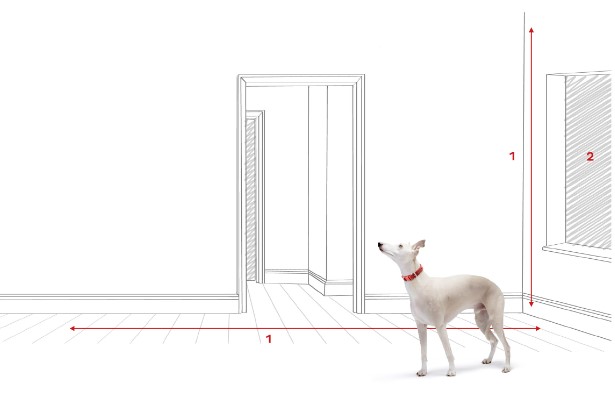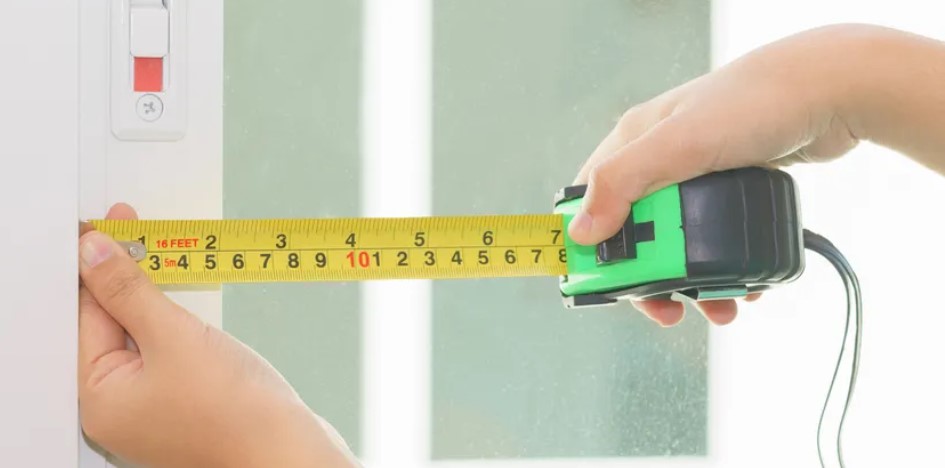Wallpaper can transform a room, adding style, texture, and personality. However, to achieve a perfect finish, accurate measurements are essential. However, it’s essential to start with accurate measurements to ensure a successful outcome.
This guide will walk you through the process of measuring your walls for wallpaper, tailored specifically for UK homes. Whether you’re a DIY enthusiast or planning to hire a professional, this step-by-step guide will help you measure correctly,
Tools Needed for Measuring
Before you start, make sure you have the following tools:
- Measuring Tape: A long, sturdy tape measure (preferably in meters and centimeters, as is standard in the UK).
- Step Ladder: Useful for reaching higher points of your walls.
- Pencil and Paper: To jot down measurements as you go along.
- Calculator: To help with the arithmetic when calculating the total square footage.
- Optional Tools: A laser measurer for precision, and a spirit level to check for straight lines.
Having the right tools will make the process much easier and more accurate. A metric measuring tape is essential since wallpaper in the UK is typically sold by the meter.
Step-by-Step Guide to Measuring for Wallpaper
Step 1: Measure the Height of the Walls
Start by measuring the height of each wall you plan to wallpaper.
- Place the end of the measuring tape at the floor and extend it to the ceiling. For accuracy, take measurements at multiple points along the wall, such as the left, center, and right sides.
- Note the highest measurement. This is crucial as ceilings are not always perfectly level.
- If your room has a sloped ceiling or alcoves, measure the shortest and longest parts of the wall.
Repeat this process for every wall you plan to cover, making sure to record each height separately. This will help in choosing the right amount of wallpaper to cover the entire wall surface.

Image source: bobvila.com
Step 2: Measure the Width of the Walls
Next, measure the width of each wall.
- Start at one corner of the wall and extend the tape measure horizontally to the opposite corner.
- To ensure precision, measure the width at the top, middle, and bottom of the wall. Walls are often not perfectly straight, so taking multiple measurements helps account for any variations.
- Record the widest measurement for each wall.

Image source: grahambrown.com
Step 3: Measure Windows, Doors, and Other Obstacles
You’ll need to deduct the area of any obstacles, like windows and doors, from your total wall area.
- Measure the height and width of each obstacle (windows, doors, built-in cabinets).
- Multiply the height by the width to find the area of each obstacle. For example, a door that is 2 meters high and 1 meter wide has an area of 2 square meters.
- Subtract these areas from your total wall area. For accuracy, measure all obstacles separately and then sum up the total area to deduct.

Image source: wallpapershop.co.uk
Step 4: Calculate the Total Square Footage
Now that you have all your measurements, it’s time to calculate the total square footage of wallpaper needed.
- Multiply the height by the width of each wall to find the total area.
- Example: If one wall is 2.5 meters high and 4 meters wide, the total area for that wall is 10 square meters.
- Add up the areas of all walls to get the total wall area.
- Subtract the total area of all obstacles (windows, doors, etc.) to find the net area that will need wallpaper.

Image source: homesandgardens.com
Example Calculation
Let’s say you have a rectangular room with the following dimensions:
- Wall 1: Height: 2.5 meters, Width: 4 meters (Area = 2.5 x 4 = 10 square meters)
- Wall 2: Height: 2.5 meters, Width: 3 meters (Area = 2.5 x 3 = 7.5 square meters)
- Two identical windows each measuring 1 meter by 1.5 meters (Area per window = 1 x 1.5 = 1.5 square meters; Total for two windows = 3 square meters)
Total wall area = 10 + 7.5 = 17.5 square meters
Net area needing wallpaper = 17.5 – 3 = 14.5 square meters
understanding Wallpaper Rolls and Coverage
Wallpaper is generally sold in rolls of a standard size in the UK. The most common roll size is 10 meters long by 52 centimeters wide. However, it’s crucial to check the specific measurements on the roll you are purchasing.
Calculating How Many Rolls You Need
- Determine the roll coverage area:
- For a standard UK roll: 10 meters (length) x 0.52 meters (width) = 5.2 square meters.
- Divide the total square footage needed by the roll coverage:
- Total area needing wallpaper: 14.5 square meters.
- Rolls needed: 14.5 ÷ 5.2 = 2.8 (always round up, so you need 3 rolls).
Considerations for Pattern Repeat and Wastage
If your chosen wallpaper has a pattern, especially a large repeat pattern, you will need to account for extra wastage to match the design correctly.
- Pattern Repeat: The distance before the pattern repeats again. This can be found on the wallpaper label. If the repeat is large, you may need more rolls.
- Wastage: It’s a good rule to add an extra 10-15% to your total measurements to account for errors, trimming, and pattern matching.
Common Mistakes to Avoid When Measuring
Accurate measuring is crucial, but there are some common mistakes people often make:
- Forgetting to Measure Obstacles: Always measure and deduct windows, doors, and built-in furniture to avoid ordering too much wallpaper.
- Not Considering Pattern Matching: Failing to account for pattern repeats can leave you short of wallpaper. Always check the pattern repeat on the label.
- Measuring Just Once: Double-check all measurements to avoid errors. Even small mistakes can lead to big problems during installation.
- Using the Wrong Units: Ensure all measurements are taken in the same unit (usually meters and centimeters in the UK).
Tips for Choosing the Right Wallpaper
Once you have your measurements, it’s time to choose your wallpaper. Here are some tips to help:
- Room Size and Light: Dark, bold patterns can make a room feel smaller, while light colors and subtle designs can make it feel more spacious.
- Style Preferences: Consider the overall style of your home. Floral patterns may suit a traditional look, while geometric designs are ideal for contemporary spaces.
- Texture and Material: Choose wallpaper that suits your needs – vinyl for durability in high-traffic areas, textured for adding depth, or non-woven for easy hanging and removal.
Popular Wallpaper Styles in the UK
- Floral and Botanical: Classic and timeless, often used in living rooms and bedrooms.
- Geometric and Abstract: Modern and bold, perfect for accent walls.
- Textured and Metallic: Adds a luxurious feel, often used in dining rooms or hallways.
Conclusion
Accurate measurements are the foundation of a successful wallpapering project. By following this step-by-step guide, you can confidently measure your walls, calculate the amount of wallpaper needed, and avoid common mistakes.
With the right preparation and tools, your wallpaper project will be a breeze, transforming your space into a beautiful and personalized area. Start your wallpaper journey today and create the home of your dreams!
Frequently Asked Questions (FAQs)
Measure the height and width of each wall to calculate the total area (in square meters). Subtract the area of windows, doors, or other obstacles. Divide the total area by the coverage area of one roll of wallpaper (typically 5.2 square meters in the UK) and round up to determine the number of rolls needed.
Measure the height of the wall from floor to ceiling and the width from one corner to the other. Measure multiple points across the wall to account for uneven surfaces. Record the largest measurements for both height and width to ensure you have enough wallpaper.
Standard wallpaper in the UK is usually 10 meters long and 52 centimeters wide, covering about 5.2 square meters per roll. Always check the specific measurements on the wallpaper roll you choose.
For a 12×12 room with walls 2.5 meters high, the total wall area is approximately 45 square meters. If one roll of wallpaper covers 5.2 square meters, you’ll need around 9 rolls. Add an extra 10-15% to account for pattern matching and wastage, so plan for about 10 rolls.
